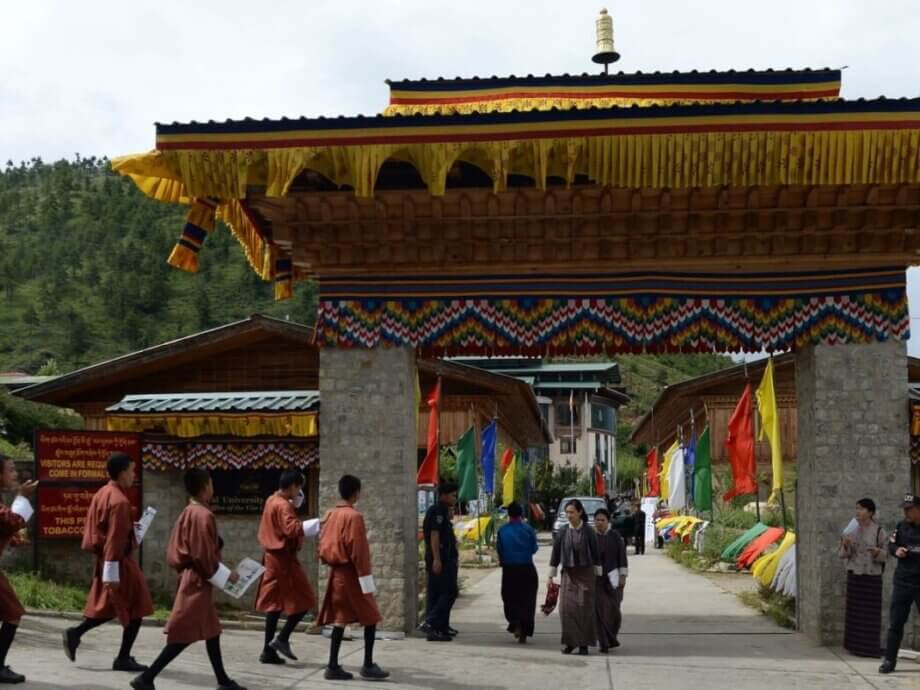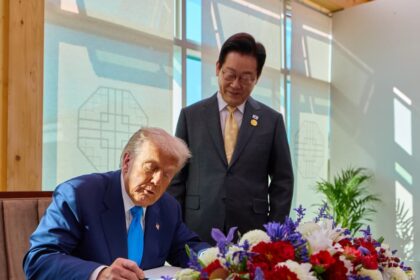Introduction: A Tiny Kingdom in the Crosshairs of Giants
High in the Himalayas, the small kingdom of Bhutan—home to just 800,000 people—finds itself at the center of a complex and high-stakes geopolitical contest. Flanked by two Asian giants, China and India, Bhutan’s 300-mile (480-kilometer) border with China remains the only one among China’s 14 land neighbors that is not officially demarcated. This ambiguity has left Bhutan vulnerable to what analysts call China’s “gray zone warfare”—a strategy of incremental, non-military coercion that is reshaping the region’s map and balance of power.
- Introduction: A Tiny Kingdom in the Crosshairs of Giants
- What Is Gray Zone Warfare?
- The Historical Roots of the Bhutan-China Dispute
- China’s Six-Stage Strategy: From Herders to Villages
- Doklam: The Strategic Heart of the Dispute
- India’s Role: Security Guarantor and Strategic Stakeholder
- Recent Developments: Accelerated Talks and New Claims
- The Broader Pattern: Infrastructure as a Tool of Coercion
- The Human and Cultural Impact on Bhutan
- International and Regional Implications
- Prospects for Resolution: Is a Deal Possible?
- In Summary
Over the past several decades, China has steadily advanced its territorial claims in Bhutan, employing a mix of civilian settlements, infrastructure projects, and military outposts to create “facts on the ground.” The ultimate prize is not just Bhutanese land, but strategic leverage over India, particularly the narrow Siliguri Corridor—India’s “Chicken’s Neck”—that connects its northeastern states to the rest of the country. The evolving dispute is a case study in modern statecraft, where power is wielded as much through construction and narrative as through force.
What Is Gray Zone Warfare?
Gray zone warfare refers to actions that fall between traditional peace and open conflict. These tactics are designed to achieve strategic objectives without triggering a conventional military response. China’s approach in Bhutan exemplifies this method: instead of launching invasions, it sends herders, builds villages, constructs roads, and gradually shifts the status quo in its favor.
As described by the Modern War Institute at West Point, gray zone activities are ambiguous, deniable, and cumulative. They are “neither too hot nor too cold,” remaining below the threshold that would provoke a military response, but intense enough to change realities on the ground. The strategy relies heavily on narrative—framing actions as normal or justified, and casting doubt on the legitimacy of the other side’s claims.
China’s gray zone tactics are not unique to Bhutan. Similar strategies have been used in the South China Sea, where artificial islands and civilian outposts have been established on disputed reefs, and along the Line of Actual Control (LAC) with India, where “well-off villages” and infrastructure projects have shifted the effective border.
The Historical Roots of the Bhutan-China Dispute
The origins of the Bhutan-China border dispute trace back to the 1950s, when China annexed Tibet. With Tibet under Beijing’s control, China inherited—and then aggressively pursued—Tibet’s historical claims over parts of Bhutan. In the decades that followed, China began asserting claims over three main areas: Pasamlung and Jakarlung in the north, and Doklam in the west. Over time, these claims expanded to include the Menchuma Valley and, more recently, the Sakteng Wildlife Sanctuary in the east.
Unlike many of its neighbors, Bhutan has never established formal diplomatic relations with China. Instead, the two countries have engaged in a protracted series of border negotiations, beginning in 1984. Despite more than 25 rounds of talks and a 2021 Memorandum of Understanding on a “Three-Step Roadmap” for boundary settlement, no comprehensive agreement has been reached. The lack of a defined border has allowed China to incrementally expand its presence in disputed areas.
China’s Six-Stage Strategy: From Herders to Villages
China’s approach to consolidating its claims in Bhutan has followed a deliberate, multi-stage process:
- Initial Incursions: Tibetan herders are sent into contested areas, displacing local Bhutanese pastoralists.
- Shelters and Outposts: Temporary shelters for herders are established, soon followed by military patrols and outposts to “protect” them.
- Infrastructure Development: Roads are built to connect these outposts to Tibet, enabling rapid movement of personnel and supplies.
- Permanent Settlements: Civilian villages are constructed, often with government incentives for settlers, solidifying China’s administrative and military presence.
According to a 2024 report, China has built at least 22 villages across approximately 825 square kilometers of disputed Bhutanese territory—about 2% of Bhutan’s total land area. These settlements, which include administrative buildings, schools, and health services, are often located in remote, high-altitude regions. The highest, Menchuma, sits at 4,670 meters (15,300 feet), higher than the tallest peak in the contiguous United States.
China offers financial incentives to settlers—reportedly up to 20,000 yuan (about $2,800) per person per year—to encourage relocation to these harsh environments. The presence of civilians, border police, and military personnel in these villages makes it increasingly difficult for Bhutan to reclaim sovereignty over the areas.
Doklam: The Strategic Heart of the Dispute
While China’s claims extend across several regions, the Doklam plateau in western Bhutan is the most strategically significant. Doklam sits near the tri-junction of India, China, and Bhutan, overlooking the Siliguri Corridor—the narrow strip of land that connects India’s northeast to the rest of the country. Control of Doklam would give China a commanding position over this vital artery, with profound implications for India’s security.
In 2017, China’s attempt to extend a road southward in Doklam triggered a 73-day military standoff with India, which intervened at Bhutan’s request. The crisis ended with both sides withdrawing, but China has since established permanent military structures in the area and continues to press its claims.
China has repeatedly offered Bhutan a “package deal”: relinquish claims to less strategic areas in the north in exchange for ceding Doklam and adjacent western territories. Bhutan, under pressure from India—which sees Doklam as critical to its own security—has so far refused.
India’s Role: Security Guarantor and Strategic Stakeholder
India’s involvement in the Bhutan-China dispute is both deep and multifaceted. Under the 2007 India-Bhutan Friendship Treaty, the two countries are committed to cooperating on issues of national interest, effectively making India Bhutan’s security guarantor. India provides economic aid, military training, and infrastructure support to Bhutan, and has a strong interest in preventing Chinese advances that could threaten the Siliguri Corridor.
India’s influence is not without controversy. Chinese analysts have described India’s role as “hegemonic,” arguing that New Delhi’s control over Bhutan’s security and economic lifelines allows it to interfere in Thimphu’s internal and external affairs. Bhutan, for its part, has sought to balance its relationships, signaling openness to diplomatic engagement with China but insisting that any border settlement must take India’s concerns into account.
Indian pressure has at times been explicit. In 2013, India suspended fuel subsidies to Bhutan in response to warming ties between Thimphu and Beijing. During the 2017 Doklam standoff, India’s military intervention was decisive in halting Chinese construction. India has also invested heavily in Bhutan’s hydropower sector and provided transit access to Bangladeshi ports, aiming to strengthen economic interdependence and preempt Chinese influence.
Recent Developments: Accelerated Talks and New Claims
In recent years, the pace of China-Bhutan border talks has accelerated. The 2021 “Three-Step Roadmap” outlined a process for delimiting and demarcating the border, and several rounds of expert group meetings have taken place since. In October 2023, Bhutan’s foreign minister met with senior Chinese officials in Beijing, signaling a potential thaw in relations.
However, even as negotiations proceed, China continues to expand its presence in disputed areas. Satellite imagery has revealed new villages, roads, and military facilities, particularly in the northeast and around Doklam. In 2020, China introduced a new claim over the Sakteng Wildlife Sanctuary in eastern Bhutan—a region not previously included in border talks. This move is widely seen as a tactical expansion, creating additional bargaining leverage and signaling that China’s ambitions are not limited to previously disputed areas.
Bhutan’s government has indicated a desire to resolve the dispute, but remains constrained by its treaty obligations to India and the realities of power asymmetry with China. As Bhutan’s Prime Minister Lotay Tshering noted, “We obviously do not want to solve one problem and give birth to another problem.”
The Broader Pattern: Infrastructure as a Tool of Coercion
China’s strategy in Bhutan is part of a broader pattern of using infrastructure as a tool of statecraft and coercion. Across the Tibetan Plateau and along its borders, China has built dams, roads, railways, and digital networks that serve both civilian and military purposes. These projects enable rapid troop movements, surveillance, and economic leverage over neighboring countries.
For example, China’s control of upstream water resources gives it the ability to manipulate river flows to downstream states, including India and Bangladesh. The construction of “well-off villages” along the border with India and Bhutan is designed to reinforce territorial claims and facilitate military logistics. As the Center for Strategic and International Studies notes, infrastructure has become a “latent instrument of state power”—a way to pressure neighbors without triggering open conflict.
This approach is not limited to the Himalayas. China’s activities in the South China Sea, where it has built artificial islands and military bases on disputed reefs, follow a similar playbook. The cumulative effect of these actions is to shift the balance of power incrementally, making it increasingly difficult for smaller states to resist.
The Human and Cultural Impact on Bhutan
For Bhutan, the consequences of China’s gray zone tactics are not just strategic, but deeply personal. Many of the disputed areas, such as the Pagsamlung Valley, hold religious and cultural significance for the Bhutanese people. The construction of Chinese villages and the displacement of local communities threaten traditional livelihoods and erode Bhutan’s historical claims.
Residents of the new Chinese settlements, many of whom are Tibetan, face harsh climatic conditions and limited economic opportunities. China has implemented schemes such as handicraft workshops and greenhouse farming to support these communities, but long-term viability remains uncertain. The settlements are also used for patriotic activities and “border patrols,” reinforcing Chinese sovereignty claims and national identity.
The lack of international attention to Bhutan’s plight has emboldened China to accelerate its efforts. As more villages are built and more territory is effectively annexed, Bhutan’s options for reclaiming its land diminish.
International and Regional Implications
The Bhutan-China border dispute is more than a bilateral issue; it is a microcosm of broader trends in international relations. China’s use of gray zone tactics—combining legal, economic, and psychological means with infrastructure development—poses a challenge to established norms of sovereignty and territorial integrity.
For India, the stakes are existential. Any Chinese gains in Bhutan, especially in Doklam, would undermine India’s strategic position and potentially threaten the Siliguri Corridor. This has led to a delicate balancing act, with India seeking to support Bhutan while avoiding direct confrontation with China.
The dispute also raises questions for the international community. If powerful states can change borders through incremental, non-military means, what recourse do smaller countries have? The pattern seen in Bhutan echoes similar tactics in Georgia (with Russian “borderization” in South Ossetia) and the Israeli-occupied West Bank, where settlements have shifted realities on the ground.
Prospects for Resolution: Is a Deal Possible?
Despite the flurry of recent talks and the signing of the Three-Step Roadmap, a comprehensive settlement remains elusive. China’s construction of permanent settlements in disputed areas has changed the bargaining landscape. It is increasingly unlikely that China will return all the territories it has occupied, especially where villages and infrastructure now exist.
Bhutan’s best hope may lie in negotiating over areas that have not yet been permanently settled, such as Upper Langmarpo and the Charitang chu and Yak chu Valleys. However, the longer negotiations drag on, the more territory Bhutan is likely to lose. The power asymmetry is stark: Bhutan’s 8,000-strong army is no match for China’s 2.5 million-strong People’s Liberation Army.
Any deal will also have to satisfy India, which has made clear that ceding Doklam to China is a red line. As Bhutan’s Prime Minister has stated, “Doklam is a junction point between India, China and Bhutan. It is not up to Bhutan alone to fix the problem. There are three of us… We can discuss this as soon as the other two parties are ready.”
In Summary
- Bhutan, a small Himalayan kingdom, faces ongoing territorial encroachment by China, which uses gray zone tactics to shift borders without open conflict.
- China’s strategy involves building villages, roads, and military outposts in disputed areas, creating “facts on the ground” that are difficult to reverse.
- The Doklam plateau is the most strategically significant area, as control would give China leverage over India’s Siliguri Corridor.
- India acts as Bhutan’s security guarantor and has intervened to prevent Chinese advances, but Bhutan must balance its relationships with both giants.
- Recent years have seen accelerated border talks, but China continues to expand its presence, and a comprehensive settlement remains unlikely in the near term.
- The dispute exemplifies a broader trend of powerful states using non-military means to alter borders, raising questions about sovereignty and international norms.
- For Bhutan, the stakes are not just territorial but cultural and existential, as traditional lands and ways of life are threatened by incremental annexation.












